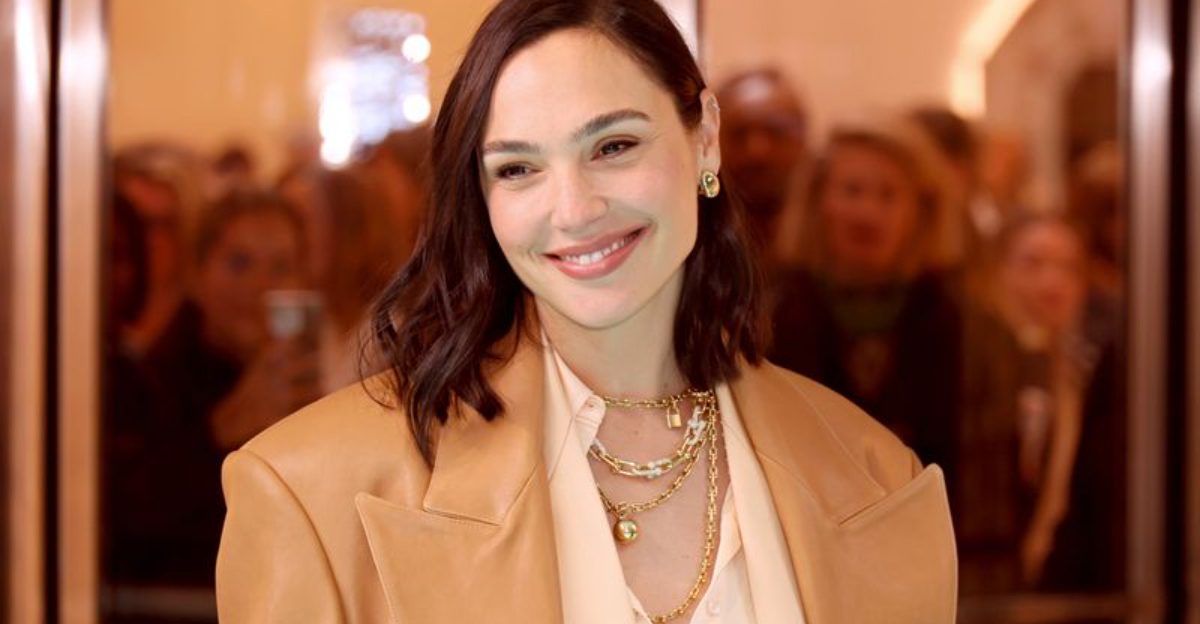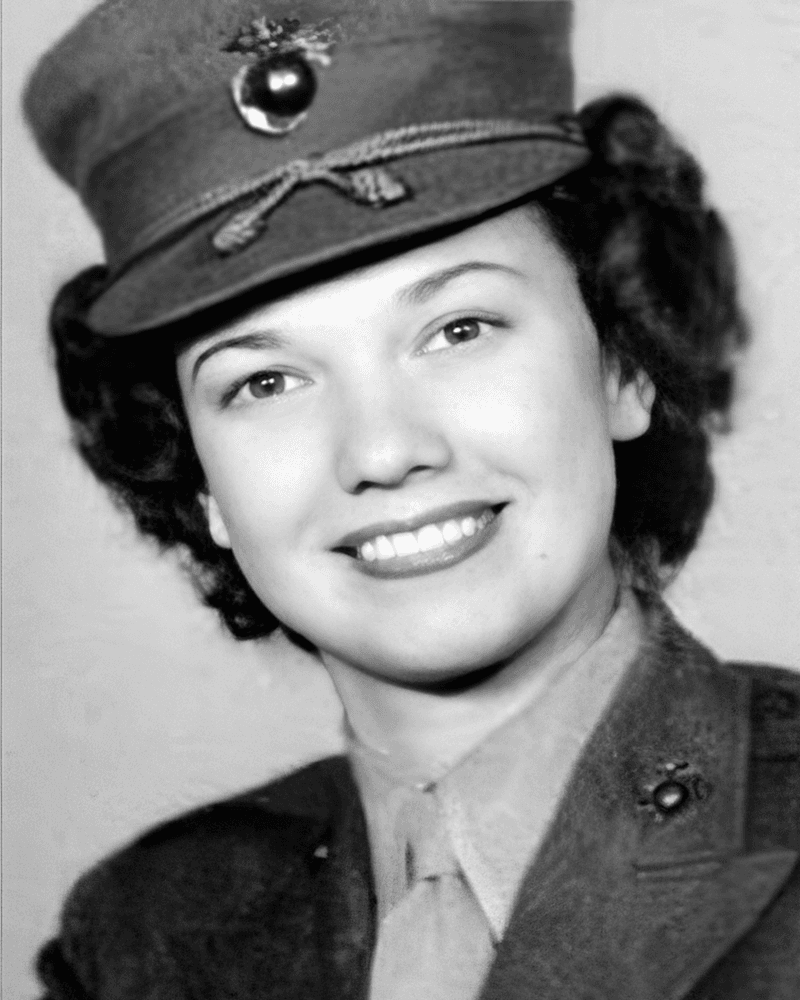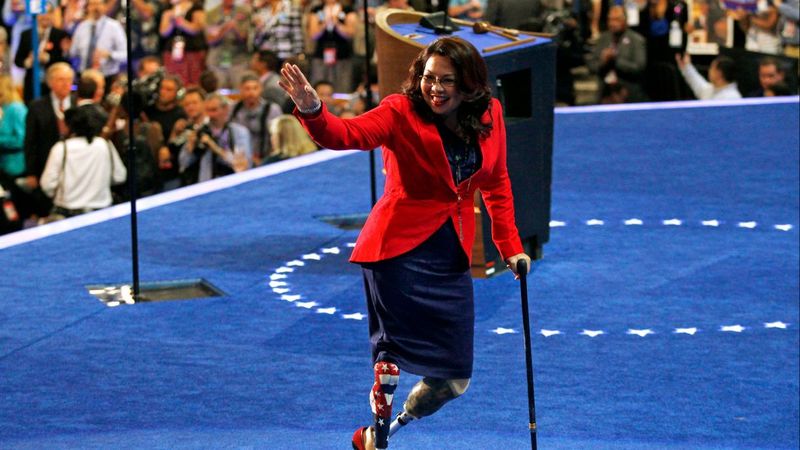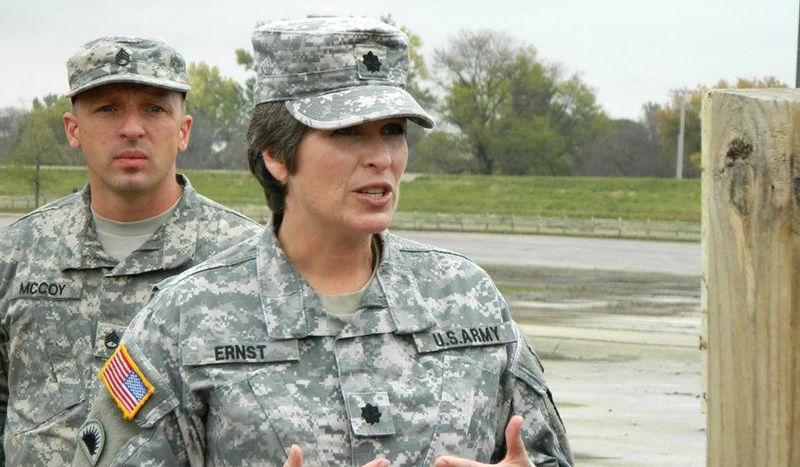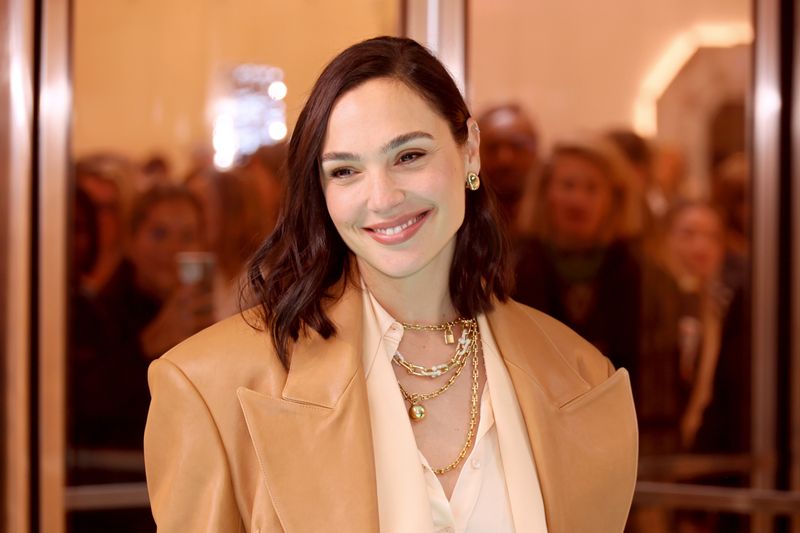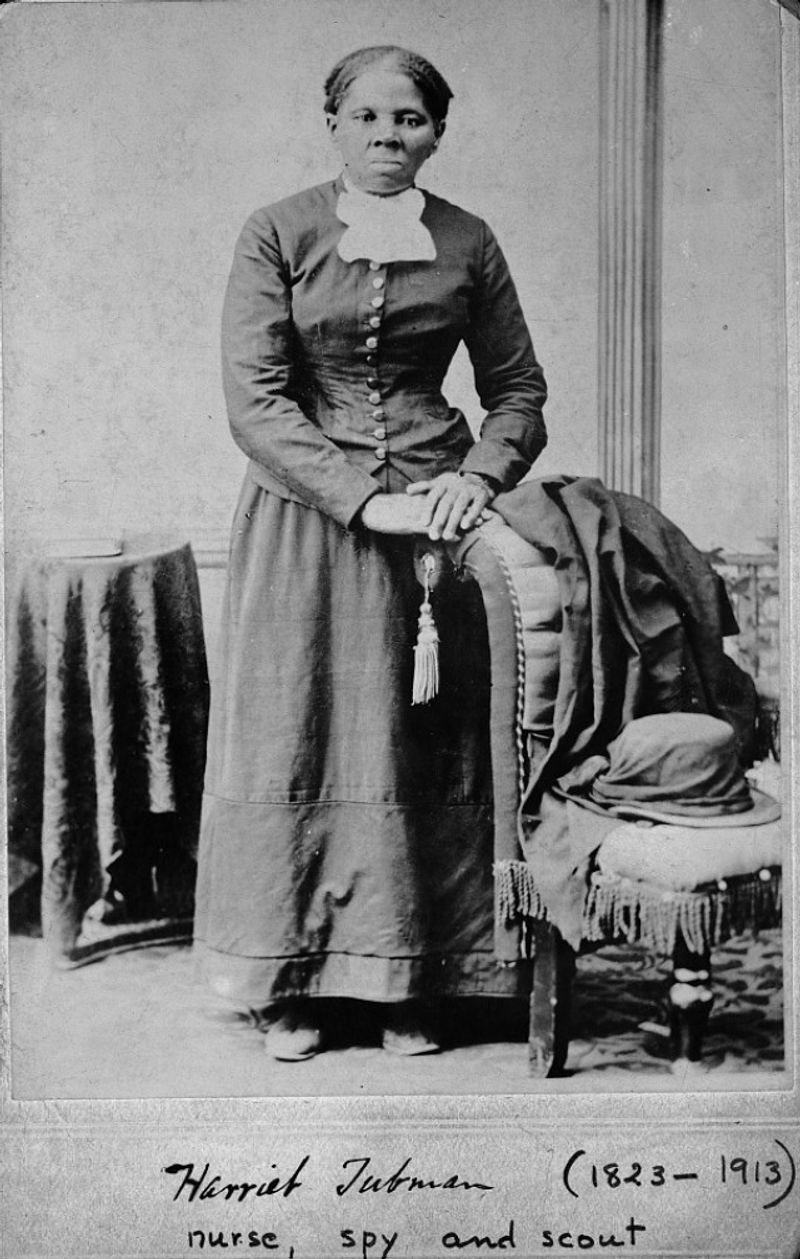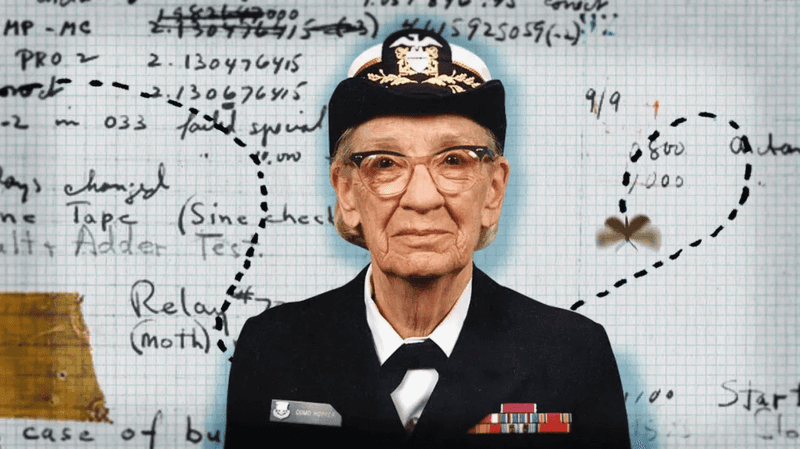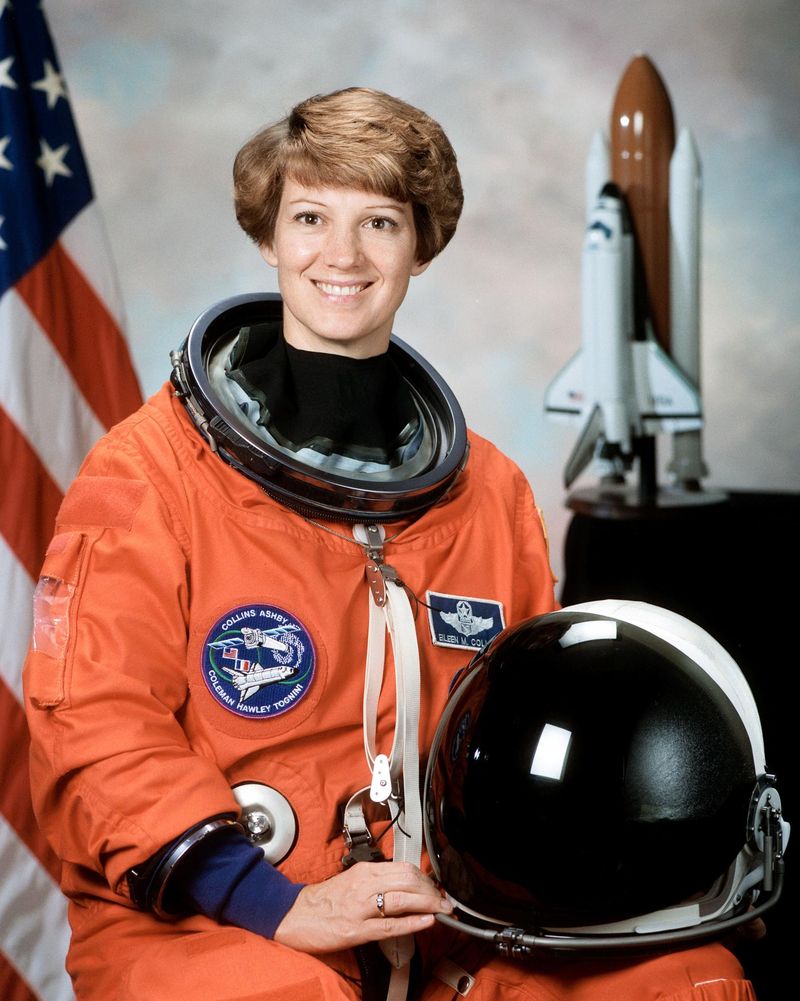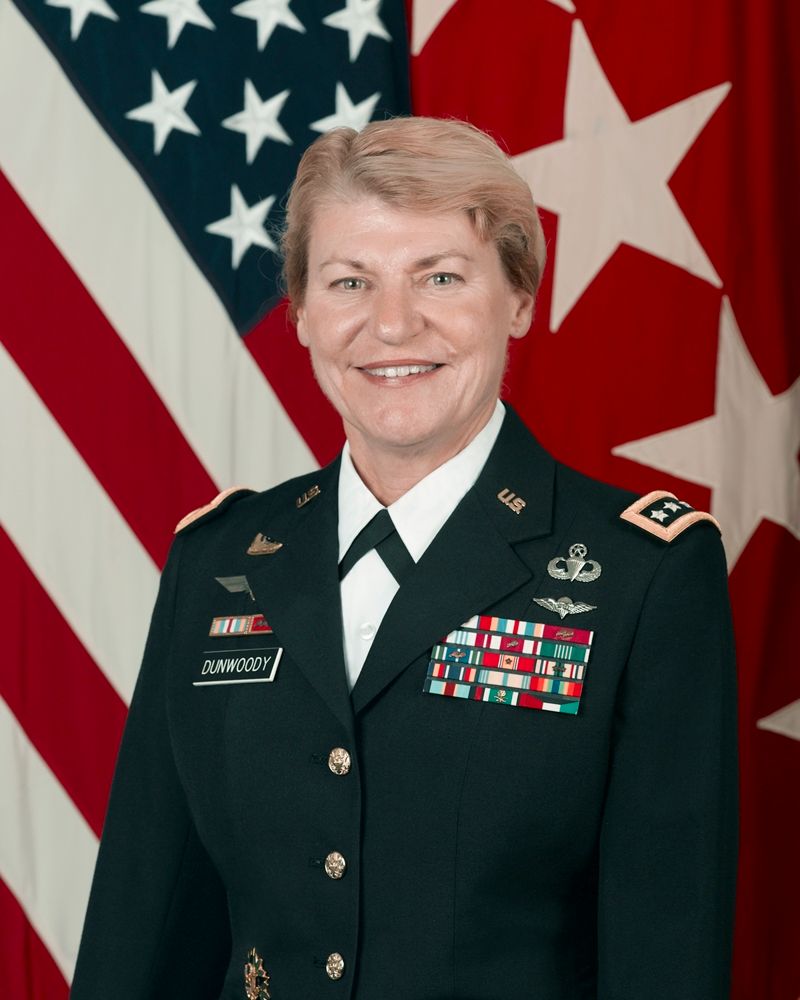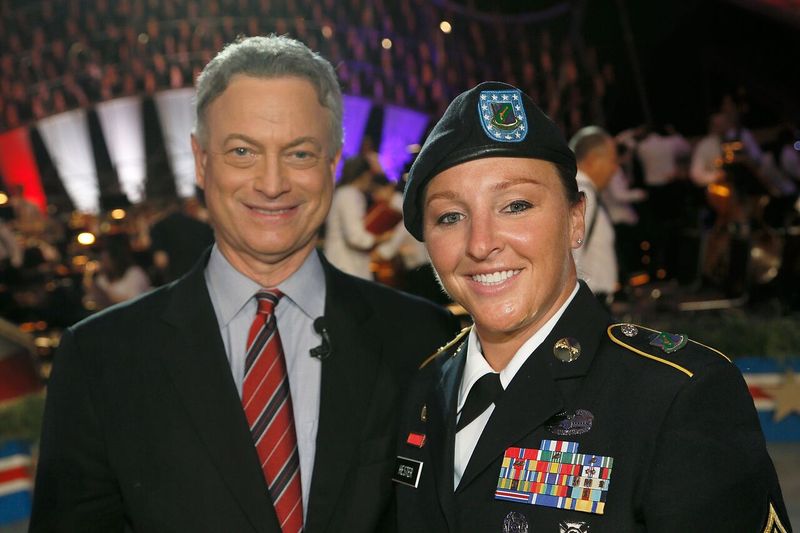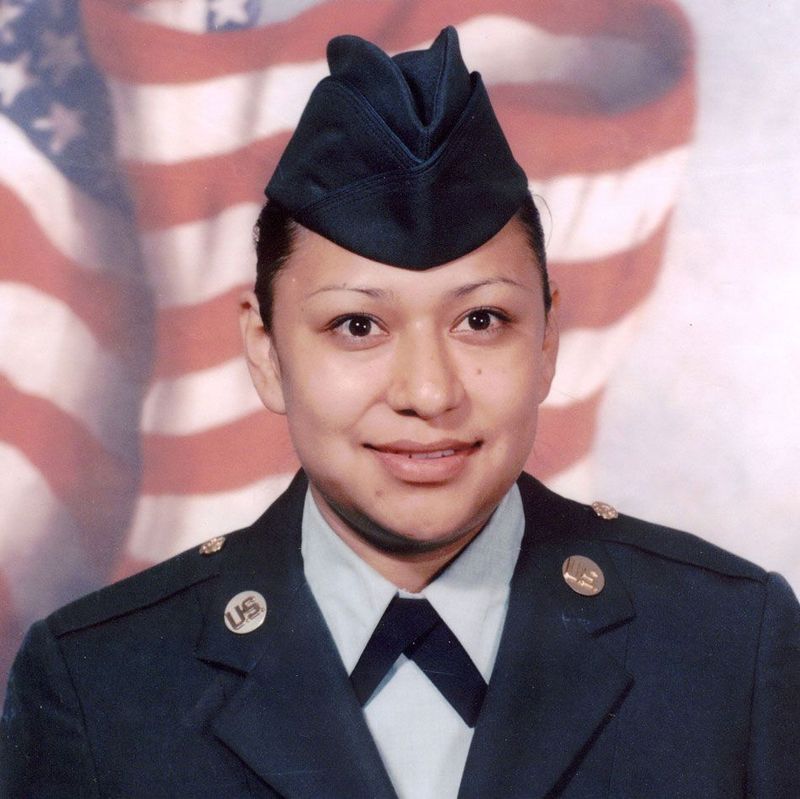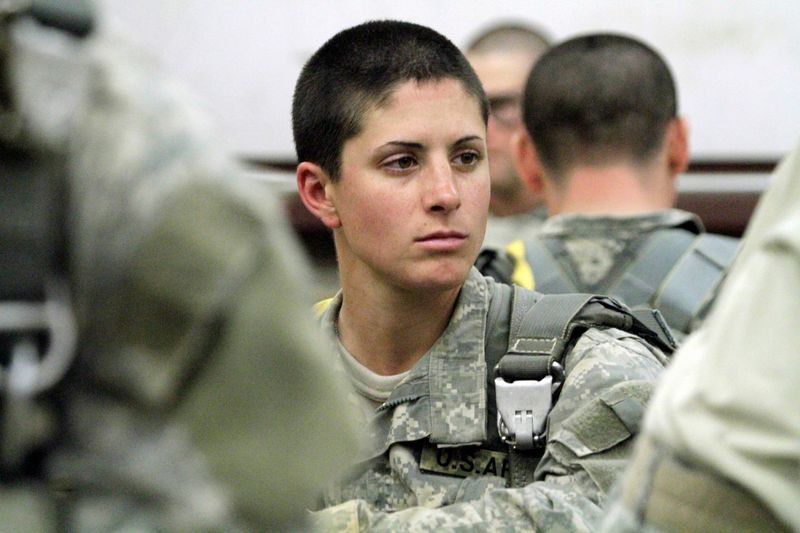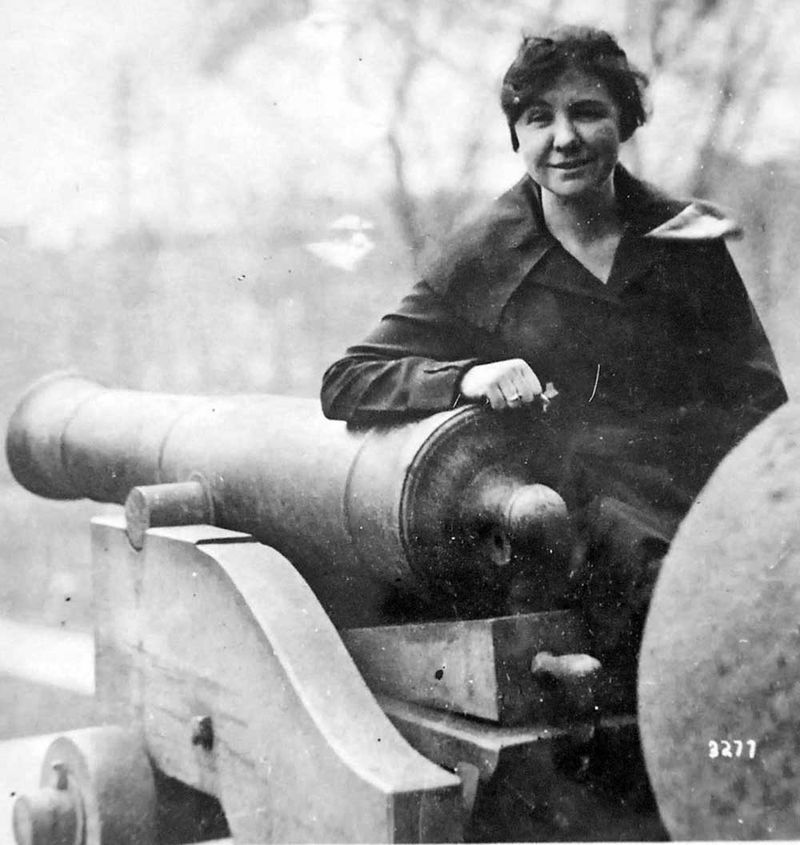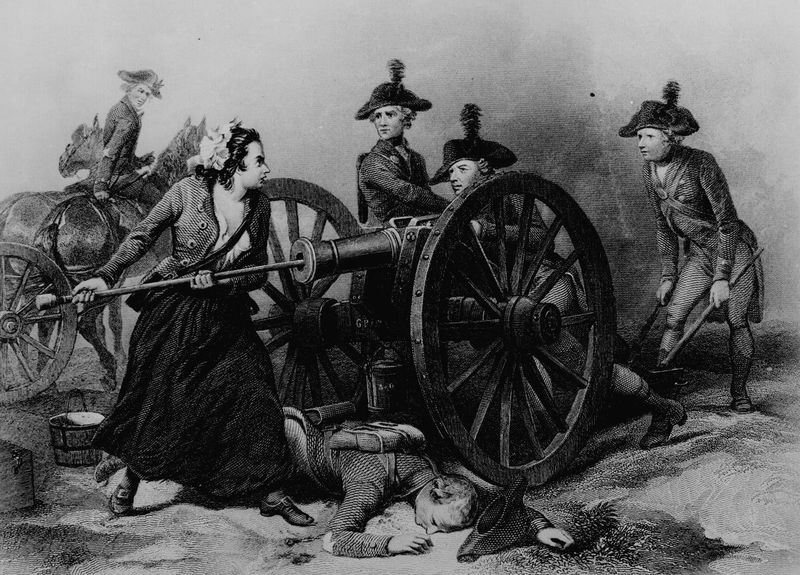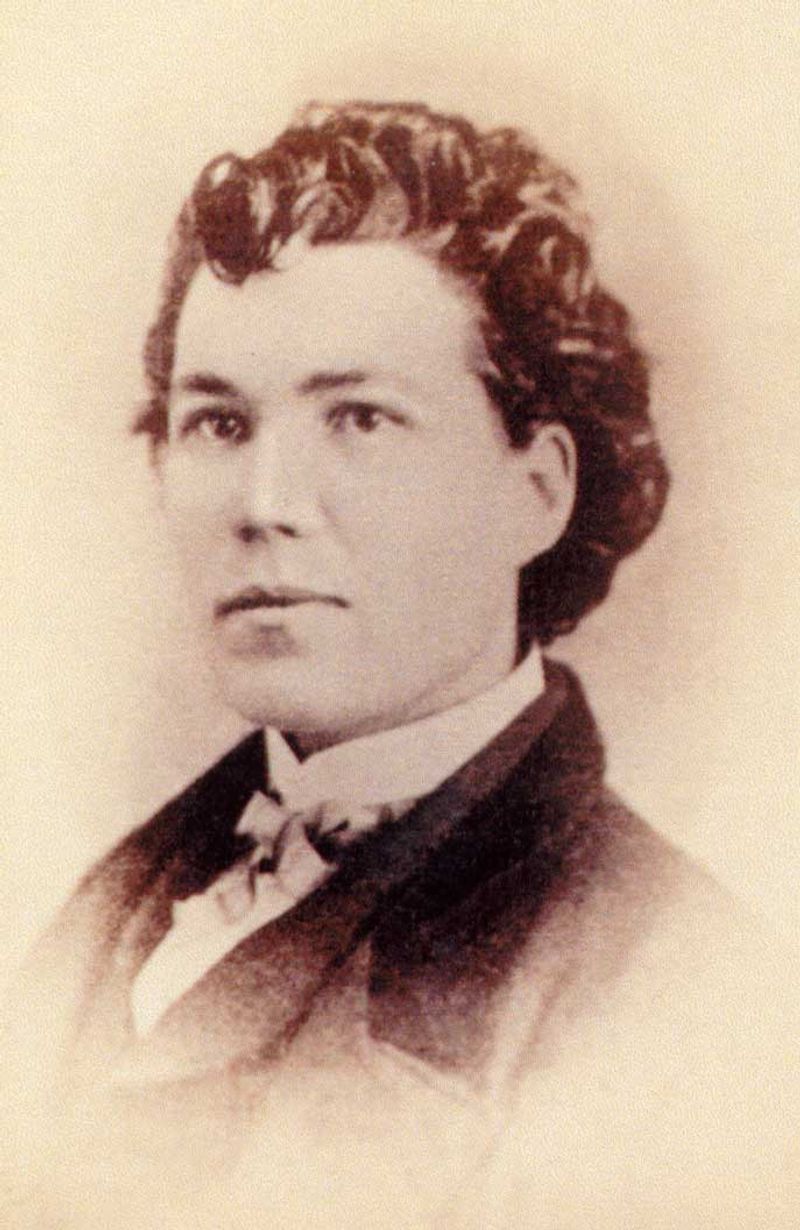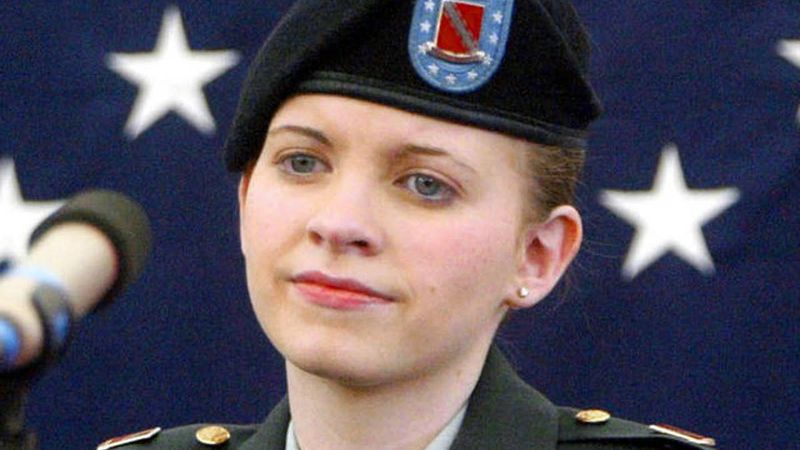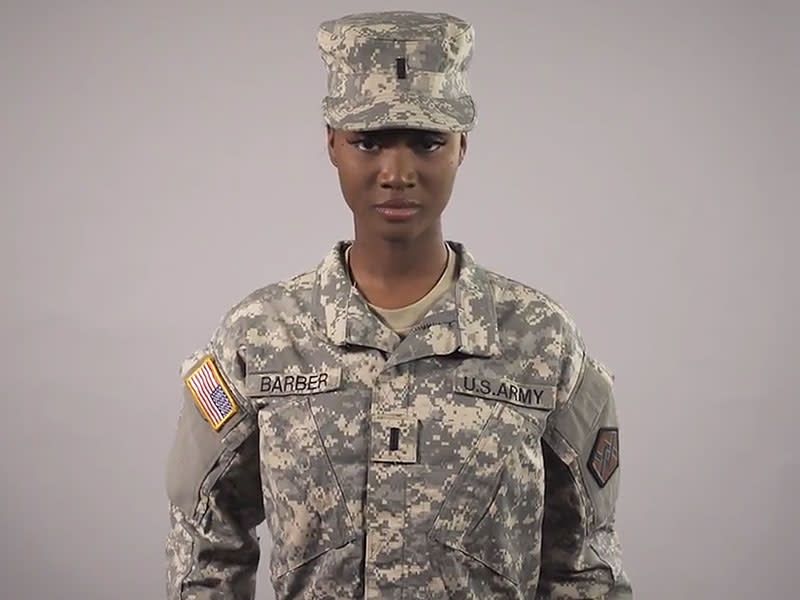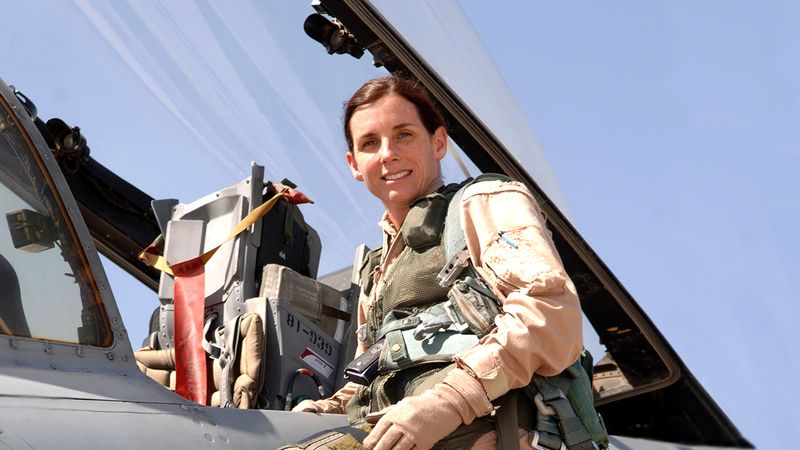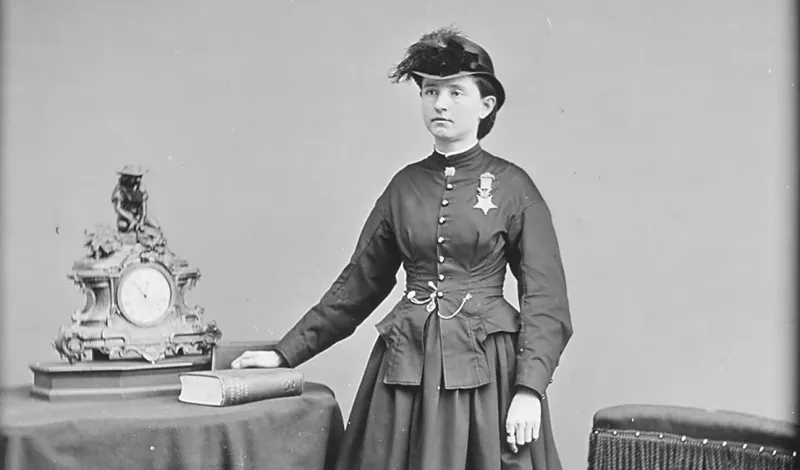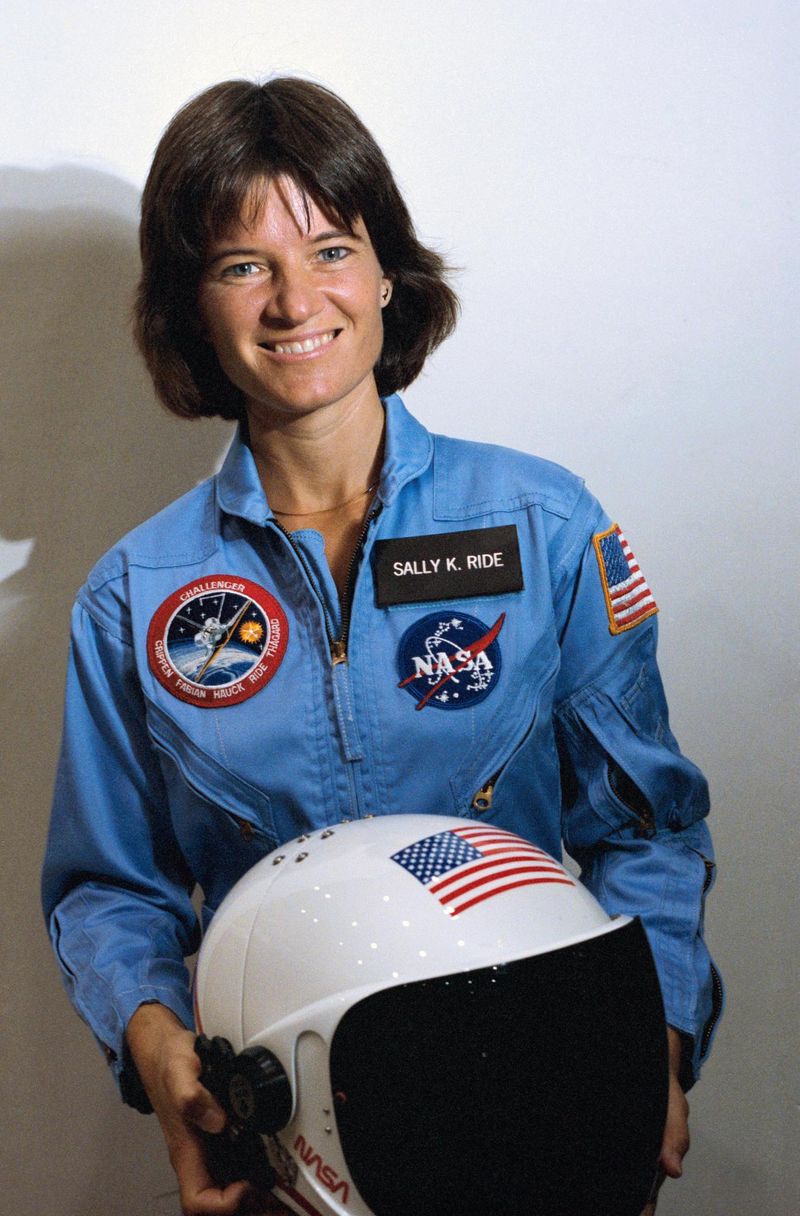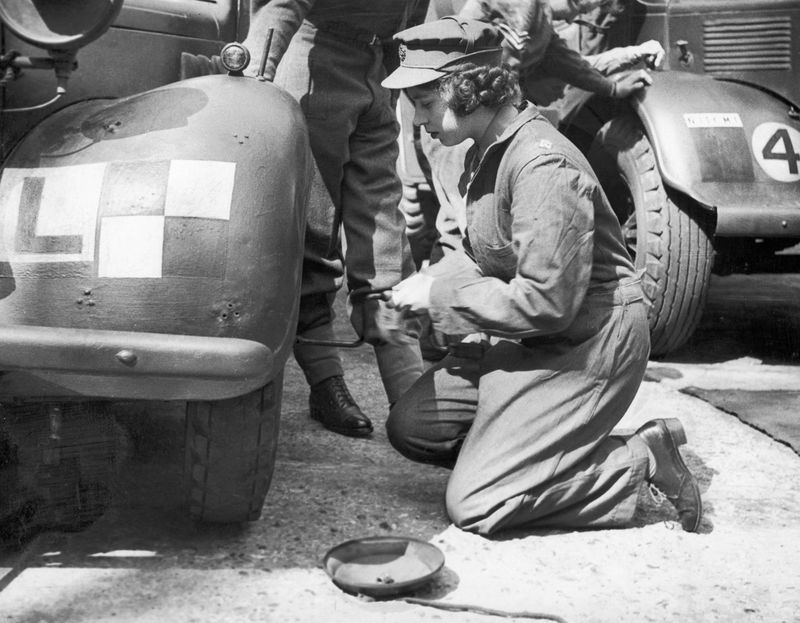Throughout history, many remarkable women have worn military uniforms before achieving fame in other fields. Their service stories often remain untold, overshadowed by their later accomplishments in entertainment, politics, or science. From driving trucks during World War II to breaking combat barriers in modern conflicts, these women demonstrated courage, determination, and patriotism in uniform.
1. Bea Arthur: Golden Girl, Marine Sergeant
Long before making audiences laugh as Dorothy Zbornak, Bea Arthur answered her country’s call during World War II. Enlisting in 1943 at age 21, she served as both a typist and truck driver, rising to staff sergeant in the Marine Corps Women’s Reserve.
Her military personnel file shows she was stationed at Marine Corps and Navy air stations in Virginia and North Carolina. Arthur rarely discussed her service publicly, maintaining her characteristic privacy about this chapter of her life.
After her discharge in 1945, she pursued acting, eventually becoming an Emmy-winning television icon known for her sharp wit and commanding presence – qualities perhaps first honed during her military days.
2. Tammy Duckworth: From Black Hawk to Senate Chamber
Lieutenant Colonel Tammy Duckworth’s life changed forever on November 12, 2004. While piloting a Black Hawk helicopter in Iraq, her aircraft was struck by a rocket-propelled grenade, causing her to lose both legs and partial use of her right arm.
Her heroism didn’t end with her injuries. After recovery, Duckworth redirected her service toward veterans’ advocacy and politics. She became the first Thai-American woman elected to Congress, the first disabled woman elected to Congress, and the first double amputee in the Senate.
“I had been given a second chance at life,” Duckworth once said. “And I wasn’t going to waste it.” Her Purple Heart and determination embody the resilience of wounded warriors.
3. Joni Ernst: From Desert Deployment to Capitol Hill
Before becoming Iowa’s first female senator, Joni Ernst commanded transportation units in Kuwait and Iraq during Operation Iraqi Freedom. Her 23-year military career included service in both the Army Reserve and Iowa National Guard, where she retired as a lieutenant colonel.
Ernst’s convoy missions navigated dangerous routes vulnerable to improvised explosive devices. This frontline experience shaped her approach to national security policy and veterans’ issues in Congress.
During her campaigns, Ernst often referenced her military background, famously running an ad about castrating hogs that promised she’d “make ’em squeal” in Washington. Her boots-on-the-ground perspective brings practical military knowledge to Senate Armed Services Committee deliberations.
4. Gal Gadot: From IDF Instructor to Wonder Woman
Before battling villains on the big screen, Gal Gadot served her mandatory two-year stint in the Israel Defense Forces. As a combat fitness instructor, she taught gymnastics and calisthenics to fellow soldiers, ensuring they maintained peak physical condition for military operations.
Gadot credits her military service with providing discipline and perspective that later helped her Hollywood career. Her experience handling weapons and performing physical training directly contributed to her convincing portrayal of Wonder Woman.
“I was a gym trainer in the Israeli army,” Gadot once explained. “The soldiers loved me because I made them fit, and the commanders hated me because I made them work.”
5. Harriet Tubman: Underground Railroad Conductor and Union Spy
Most know Harriet Tubman for guiding enslaved people to freedom, but her Civil War service as a Union Army scout, nurse, and spy remains less celebrated. In 1863, she became the first woman to lead an armed military raid, guiding Colonel James Montgomery’s forces along South Carolina’s Combahee River.
The operation freed over 700 enslaved people while destroying valuable Confederate supplies. Tubman’s intimate knowledge of covert movement and Southern terrain made her invaluable to Union intelligence efforts.
Despite her extraordinary contributions, Tubman struggled for decades to receive her military pension. Her tactical brilliance and courage under fire showcased abilities that military leadership initially refused to acknowledge in women.
6. Grace Hopper: The Admiral Who Computerized the Navy
When mathematics professor Grace Hopper joined the Navy WAVES (Women Accepted for Volunteer Emergency Service) in 1943, she couldn’t have predicted she’d revolutionize computing. Assigned to Harvard’s Mark I computer team, she wrote the first programming manual and later developed COBOL, a user-friendly programming language still used today.
Hopper coined the term “debugging” after literally removing a moth from a computer. Her naval career spanned 43 years, culminating in her promotion to rear admiral at age 79.
Known as “Amazing Grace” and “Grandma COBOL,” Hopper frequently quipped: “It’s easier to ask forgiveness than permission.” This philosophy drove her boundary-breaking innovations in both military and computer science.
7. Eileen Collins: Breaking Barriers from Cockpit to Cosmos
Colonel Eileen Collins’ journey from Air Force T-38 instructor pilot to NASA’s first female shuttle commander exemplifies determination. After joining the Air Force in 1978, she became one of the first women selected for pilot training following the program’s gender integration.
Collins excelled as a C-141 transport pilot and mathematics instructor at the Air Force Academy. Her exceptional flying skills earned her selection as NASA’s first female shuttle pilot in 1995, followed by making history as the first woman to command a space shuttle mission in 1999.
“Sometimes you have to be first,” Collins once remarked about breaking gender barriers. Her military aviation expertise proved crucial during critical shuttle maneuvers, demonstrating how military training prepares personnel for extraordinary challenges.
8. Ann E. Dunwoody: The Four-Star Pioneer
General Ann Dunwoody shattered the military’s ultimate glass ceiling in 2008, becoming America’s first female four-star general. Her 37-year Army career began in 1975, when women were still finding their place in military leadership.
Dunwoody revolutionized military logistics, commanding the Army Materiel Command with its 69,000 personnel and $60 billion budget. Her expertise ensured soldiers received equipment and supplies during the Iraq and Afghanistan wars.
“There is no one more surprised than I,” she said at her promotion ceremony. “Not because I’ve never aspired to achieve this rank, but because I was raised in a family that didn’t believe that women should be in the military.” Dunwoody’s logistics innovations continue influencing military operations today.
9. Leigh Ann Hester: Silver Star Under Fire
Sergeant Leigh Ann Hester never expected to make history during her Kentucky National Guard deployment. On March 20, 2005, her military police squad was escorting a supply convoy in Iraq when approximately 50 insurgents ambushed them with machine guns and rocket-propelled grenades.
Instead of seeking cover, Hester led her team through a daring counterattack. She cleared two trenches of enemy fighters, personally eliminating three insurgents and helping defeat the ambush.
For her extraordinary valor, Hester became the first woman since World War II to receive the Silver Star for direct combat action. Her citation reads: “Her actions saved the lives of numerous convoy members.” Hester’s courage demolished outdated notions about women in combat.
10. Lori Piestewa: A Legacy of Sacrifice
Specialist Lori Piestewa, a Hopi mother of two, made history through tragedy. During the 2003 invasion of Iraq, her unit was ambushed in Nasiriyah after making a wrong turn. Piestewa’s Humvee was hit by a rocket-propelled grenade, fatally wounding her.
She became the first Native American woman to die in combat while serving in the U.S. military and the first female casualty of the Iraq War. Arizona’s Piestewa Peak stands renamed in her honor, replacing a name many considered offensive to Native Americans.
Her legacy extends beyond her sacrifice. Piestewa’s story highlighted Native Americans’ long tradition of military service and sparked important conversations about women in combat zones during the war’s early days.
11. Kristen Griest: Ranger School Trailblazer
Captain Kristen Griest didn’t set out to make headlines – she simply wanted to prove women could meet the same standards as men. In 2015, she became one of the first two women to graduate from the Army’s punishing Ranger School, completing the same grueling training men had faced for decades.
The 62-day course pushed Griest through swamps, mountains, and sleep deprivation. She carried the same heavy rucksack, performed the same physical tasks, and endured the same mental challenges as her male counterparts.
Later becoming the Army’s first female infantry officer, Griest wrote: “The Army, unlike any other profession, must respond to the nature of war, not the nature of society.” Her graduation opened doors for countless women seeking combat roles.
12. Loretta Perfectus Walsh: Navy’s First Enlisted Woman
When Loretta Walsh raised her right hand on March 17, 1917, she changed American military history forever. As World War I escalated, the Navy faced personnel shortages, leading Secretary of the Navy Josephus Daniels to authorize women’s enlistment in non-nursing roles.
Walsh became the first woman to officially join the Navy as a Yeoman (F) – the F designating female. She performed crucial clerical duties at Naval Home Philadelphia, allowing men to deploy overseas.
By war’s end, over 11,000 female yeomen had followed Walsh’s path. Though discharged in 1919 when women’s naval service temporarily ended, Walsh had permanently cracked open the door for women in America’s armed forces.
13. Margaret Corbin: Revolutionary War’s Forgotten Heroine
When British forces attacked Fort Washington in 1776, Margaret Corbin refused to flee. After her husband John fell in battle, she immediately took his place loading and firing their cannon against advancing troops.
Severely wounded by grapeshot that tore through her shoulder, chest, and jaw, Corbin survived but never regained full use of her left arm. For her valor, the Continental Congress granted her half a soldier’s lifetime pension – making her the first woman to receive a military pension from the United States.
Long overlooked by historians, Corbin was finally recognized in 1926 when her remains were reinterred with military honors at West Point. Her fierce determination at “Fort Tryon” (named for the British governor) ironically helped birth a nation that would eventually celebrate her courage.
14. Sarah Emma Edmonds: The Union Soldier Who Was Actually a Woman
In 1861, “Franklin Thompson” enlisted in the 2nd Michigan Infantry – but this Union soldier harbored an extraordinary secret. “Franklin” was actually Sarah Emma Edmonds, a woman disguising herself to serve her adopted country.
For two years, Edmonds maintained her male identity while participating in numerous battles, including First Bull Run and Antietam. She also conducted dangerous spy missions behind Confederate lines, using various disguises including a female slave and a male civilian.
Malaria eventually forced her to desert rather than risk discovery in a hospital. Years later, Edmonds successfully petitioned for recognition as a veteran and received a pension. Her remarkable memoir, “Nurse and Spy in the Union Army,” became a bestseller that funded veterans’ relief efforts.
15. Jessica Lynch: From POW to Reluctant Hero
Private First Class Jessica Lynch never sought fame when she joined the Army to fund her education. On March 23, 2003, just three days into the Iraq War, her convoy was ambushed in Nasiriyah after taking a wrong turn.
Lynch suffered multiple injuries when her vehicle crashed. Captured and held at an Iraqi hospital, she endured nine days as America’s first female prisoner of war since World War II. Her dramatic nighttime rescue by Special Forces became international news.
Later, Lynch courageously corrected exaggerated media accounts of her capture and rescue. “The truth is always more heroic than the hype,” she stated. Her story highlighted both the dangers facing female soldiers and the complex reality of modern warfare.
16. Deshauna Barber: Beauty Queen in Boots
Captain Deshauna Barber shattered stereotypes when she became the first active-duty soldier crowned Miss USA in 2016. The logistics commander balanced weekend drills with her Army Reserve unit while fulfilling pageant duties and working as an IT analyst for the Department of Commerce.
Barber’s platform highlighted PTSD awareness following her sister’s military suicide. “As a woman in the military, I am able to show that we are just as tough as men,” she declared during the competition.
After completing her military service, Barber became CEO of Service Women’s Action Network, advocating for female veterans. Her unique journey from military logistics to the pageant stage showcases the diverse talents women bring to military service.
17. Martha McSally: Breaking Sound Barriers
Colonel Martha McSally didn’t just serve in the Air Force – she transformed it. As the first American woman to fly in combat, she piloted A-10 Thunderbolt II “Warthog” attack aircraft over Iraq and Kuwait during Operation Southern Watch, enforcing the no-fly zone.
McSally successfully challenged military policies requiring servicewomen to wear abayas off-base in Saudi Arabia. “The notion that we’re going to make female military personnel wear the berka-like outfit of our fundamentalist Islamic hosts is repugnant,” she argued.
After 26 years of service, McSally retired as a colonel and entered politics, eventually becoming a U.S. Senator from Arizona. Her military reforms continue benefiting female service members who no longer face discriminatory dress codes.
18. Mary Edwards Walker: The Only Female Medal of Honor Recipient
Dr. Mary Edwards Walker defied 19th-century conventions as a pants-wearing female physician. When the Civil War erupted, she volunteered as a surgeon but was initially limited to nursing duties due to her gender.
Walker’s persistence eventually won her a position as a contract surgeon with the Union Army. She frequently crossed battle lines to treat civilians, leading to her capture and imprisonment as a spy by Confederate forces.
In 1865, President Andrew Johnson awarded Walker the Medal of Honor for her extraordinary battlefield service – making her the only woman ever to receive this highest military decoration. Though controversially rescinded in 1917 during a medal eligibility review, President Jimmy Carter restored her medal posthumously in 1977.
19. Sally Ride: NASA’s Military Connection
While not officially enlisted, Dr. Sally Ride’s contributions to military aerospace technology merit recognition. As America’s first woman in space, she worked extensively with Navy and Air Force personnel throughout her NASA career on classified military satellite deployments.
Ride underwent military-style survival training alongside Air Force pilots. Her expertise in robotics later proved valuable to national defense projects after her NASA career.
“All adventures, especially into new territory, are scary,” Ride once noted about breaking barriers. Her groundbreaking work aboard Space Shuttle Challenger opened doors for women in aerospace and military aviation. After her NASA career, Ride continued contributing to national security through her work on intelligence advisory boards.
20. Queen Elizabeth II: The Royal Mechanic
Before wearing the crown, 18-year-old Princess Elizabeth donned coveralls. Despite royal privilege that could have exempted her, she insisted on joining the Auxiliary Territorial Service during World War II, becoming the first female royal family member to serve as an active military member.
As No. 230873 Second Subaltern Elizabeth Windsor, she trained as a mechanic and military truck driver. Photos of the future queen in grease-stained uniforms checking engines and changing tires captured the British public’s imagination.
“I began to understand the esprit de corps that flourishes in the face of adversity,” she later reflected. This hands-on wartime experience gave Queen Elizabeth unique credibility as Commander-in-Chief of British Armed Forces throughout her 70-year reign.
